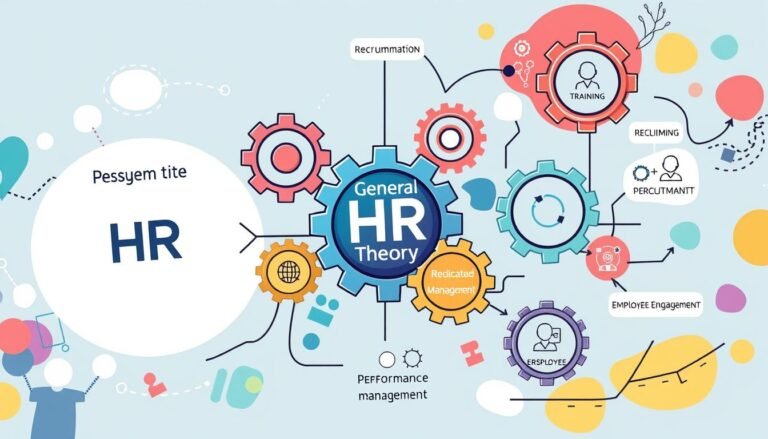How can Irish companies implement effective performance management systems?
Performance management systems help Irish companies better assess their employees and manage talent. They create a culture of teamwork and goal sharing. This leads to ongoing improvement in business processes and skills.
But, only 28% of Irish companies have stopped using the old-style annual reviews.
Big companies with a global reach are leading a change in how we look at performance. They’re adopting new methods, like the OKR framework, at a fast pace. This is seen in companies like Google, LinkedIn, and Intel, which use OKRs to set and meet quarterly goals.
In Ireland, dealing with poor performance involves following specific steps and rules. Regular feedback and coaching are key. Some places even do 360-degree feedback, where you get input from everyone around you. This helps give a complete view of how someone is doing at work.
Many Irish companies are also starting to use a method called agile performance management. It’s similar to how software is developed quickly in small steps. This approach is more flexible and keeps up with changes better.
Some companies take a different route by focusing on what their employees are best at. They believe that by building on these strengths, they can get better results. Others invest a lot in helping their employees grow, like offering personal career plans and training.
Getting rid of the old, once-a-year reviews is a step in the right direction. Through real-time performance systems, companies can now track progress daily. An effective performance system boosts employees and the company. It drives everyone towards the same goals, leading to growth and more job satisfaction.
Understanding Performance Management
Performance management helps organizations get better all the time. It includes setting goals, talking often, recognizing good work, and planning for growth. This method makes expectations clear and feedback regular. It makes companies work better.
What is Performance Management?
It’s a journey to make employees do their best by giving them feedback and guidance. Clear goals help everyone know what they should be doing. When everyone works together, they grow, helping the company succeed.
Why Implement Performance Management?
It boosts motivation and helps set clear goals. Many big companies around the world are changing how they manage performance. They use data and feedback to choose wisely and do better.
Recognizing good work makes employees feel they matter. Most people prefer regular check-ins over once-a-year reviews. In places like Ireland and the EU, they try different methods to fit different needs.
This method is fair for everyone. It helps fix lower performance and ensures fairness. It’s a key tool for growth, for both people and companies.
Goal Setting for Irish Companies
Setting effective goals is very important for companies. It makes sure that all employees know what they need to do. By setting clear performance standards and sharing them, everyone understands their role. This links personal goals to the company’s big goals, creating a plan that’s both smart and doable.
Clear Expectations
In goal setting, being clear is key. Employees need to know their job and what they’re aiming for. This makes reaching performance standards easier and lessens off-track moments. Through things like yearly performance appraisals, always giving feedback, and coaching, the goals and how to meet them stay clear all year.
Alignment with Organizational Goals
Good goal setting means making sure individual and team goals help the company’s big goals. The Leadership Competence Framework helps guide this strategy. It ensures that managers know clearly how to reach these goals. This approach makes performance management a key factor in success.
The Importance of Continuous Feedback
Continuous feedback is key in today’s performance management. It’s different from the old way with just a yearly check. Now, employees get advice when they need it, leading to quick changes and better work.
A LinkedIn survey showed only 28% still use the old yearly review system. Josh Bersin adds that 70% of big companies are changing how they do things. They’re moving towards giving feedback more often to help employees grow and do better.
Places like Ireland and the EU are using new ways to manage how people work. They use continuous feedback, coaching, setting OKRs, and getting feedback from everyone you work with. This approach boosts how well people work and helps them fix mistakes before it’s too late. It makes employees feel valued and keeps them happy, which is good for the whole company.
The old way of checking once a year doesn’t help people learn the new skills they need. But with more timely feedback, workers can see where they need to improve. This helps them get better at their jobs and makes the whole team stronger.
Talking often with your boss builds trust and makes work better. Companies that do regular one-on-one chats see a big jump in how much their staff care about their jobs. This way of giving feedback works well and makes people want to do their best.
Focusing on giving feedback all the time shows a company cares about its employees. This care helps them acquire new talent and makes current staff want to stay. The result is a 10% rise in how well they do, which means the company does better too.
Training and Development Programs
Today, training and development programs play a key role in the business world. They help employees grow and improve the organization’s success. It’s all about making sure people have the right skills and investing in ways to develop those skills further.
Identifying Skill Gaps
Effective training starts with understanding what skills employees need. This can involve looking closely at their abilities and how they perform. Once the areas needing growth are known, customized training can bridge those gaps.
Providing Resources for Growth
Giving employees what they need to grow is critical. Companies like Microsoft and Adobe lead by example, offering workshops, online learning, and mentoring. These support not just current job improvements but also ready staff for bigger future roles.
About 70% of big companies are changing how they manage employee performance. They now focus more on constant growth than yearly reviews. Choosing the right training and development approaches is now crucial. It helps create a culture of always learning, benefiting everyone.
Utilizing Data-Driven Decision Making
Data is essential today for organizations. In 2022, the NewVantage Partners survey found 92.1% of them gained from using Data and AI. This shows the big benefit of analyzing performance data for smart choices.
Amazon is a great example. Their system suggests items to buy, making up 35% of their sales. This shows how useful personal data can be. Amazon looks at what you bought before and what you’ve looked at, then suggests similar things you might like.
Think beyond just buying – Walmart is great with its supplies. It shows how smart data use makes everything better and cheaper.
Companies like Google and Southwest Airlines also get it. Google says there are eight behaviors that great managers show, all thanks to studying data closely. Meanwhile, Southwest Airlines uses what it knows about customers to guess future needs. Both these companies use performance data analysis to keep their strategies sharp and attract more loyal customers.
A study by Harvard Business Review of 646 top leaders showed something cool. Companies that really use data in their choices usually do better money-wise. Schools like Utica University are helping more professionals get good at handling data through programs. They focus on using data well in real work situations.
Making choices based on data is now seen as key for many places. Using data well helps businesses pick the best people and fit their plans with big goals. This keeps them winning and quick to react in their areas.
Establishing Effective Feedback Mechanisms

Effective feedback mechanisms are key for performance management. It’s vital to create an area where constructive feedback and ongoing dialogue are welcome. This promotes regular exchanges of ideas and performance chats based on fair procedures.
A recent poll on LinkedIn found only 28% have kept yearly reviews. More are moving to regular, varied feedbacks. About 70% of big companies are shifting to feedback-focused models.
In Ireland and the EU, several feedback methods are used. These range from yearly appraisals to continuous feedback and the 360-degree Feedback. They keep the discussion open for performance talks, spot chances to get better, and celebrate success.
“Deloitte found their staff spent 2 million hours a year on performance reviews.”
Using structured methods for performance management involves noting and solving issues quickly. It also means offering chances for growth. This helps companies handle problems without getting into legal issues.
Good feedback helps find and solve performance problems. It also boosts how well employees work together. It’s key for HR to focus on clear and open ways to communicate. This makes the process supportive and fair.
To wrap up, the aim is to make constructive feedback part of daily work life. This keeps the door open for talks about how to get better at what we do. Such a setup is critical for making any performance management system a success.
Managing Underperformance
Managing underperformance is key for keeping high standards and a good work atmosphere. It starts with identifying underperformance issues. Then a clear plan is made to help employees meet goals.
Identifying Performance Issues
First, you have to spot and note the issues with performance. Giving feedback and support quickly is important. It lets employees know what they need to work on.
This is part of making the underperformance process fair and clear. Companies in Ireland and the EU often use these steps to manage performance.
Developing a Performance Improvement Plan (PIP)
The Performance Improvement Plan (PIP) is a main tool for managing underperformance. This structured approach sets out goals, expectations, and times to improve.
It’s important to keep checking progress, writing notes, and following the rules. This makes sure the PIP is correct and fair.
Training and offering development chances, having employees offer input, and the right to appeal are vital. Including these aspects helps create a supportive workplace. This benefits everyone by boosting performance and preventing problems.
Employee Engagement Strategies
High employee engagement is key for any company’s success. To achieve this, organizations can use strong recognition programs. These programs reward those who perform exceptionally well.
Recently, some companies have stepped away from yearly performance reviews. Kelly Services and Adobe are two big names doing this. Now, 6% of top firms don’t do these annual reviews anymore.
Instead, companies are opting for regular feedback. Microsoft started focusing on team work and employee development in 2013. This change highlights the move towards ongoing support.
Good recognition programs do more than make people happy in their jobs. They also help the company perform better. It’s important that the criteria for recognizing good work is clear and fair. For example, Goldman Sachs switched to more regular feedback in 2016.
Efforts to improve employee engagement should also make workers feel part of the decision-making. Giving employees a voice can make them more motivated. It can also strengthen their commitment to the company’s objectives.
Focusing on constant improvement and open discussions is vital to keep employee engagement strong.
Tracking Performance Metrics
Tracking performance metrics is key for organizations looking to improve. It involves looking at financial and non-financial measures. This gives a clear picture of how well the organization is doing. Companies use key performance indicators (KPIs) and the balanced scorecard to measure performance in-depth.
Key Performance Indicators (KPIs)
KPIs are essential for checking how well the company is meeting its goals. They cover both financial and non-financial areas. This helps in understanding things like sales, how happy employees are, and if customers are coming back.
Managers spend a lot of time managing performance, showing it’s important. With KPIs, this process is more efficient. For example, CEB states managers spend 210 hours a year on this.
The approach Deloitte used dropped hundreds of hours wasted, showing KPIs make a big difference. Also, KPIs are vital for managing talent and resources effectively. They help companies keep growing.
Balanced Scorecard
The balanced scorecard widens the scope by looking at more than money. It checks on customers, internal processes, and learning areas. For instance, eReward finds companies want to link individual and company goals. This shows how a balanced scorecard fits.
Adobe and Microsoft, for example, now focus on ongoing feedback rather than yearly reviews. This comes as many companies felt their old ways of measuring performance were not working well. It shows the value of regular, all-inclusive checks.
Using both KPIs and the balanced scorecard gives a complete picture of performance. It ensures money goals match the organization’s overall aims. This drives the company to do better in all areas and supports strategic goals.
How can Irish companies implement effective performance management systems?
For Irish businesses to have top-notch performance management, they need both old and new strategies. Over 70% of multinational firms are now using fresh models that don’t only do yearly reviews. This shift shows how much growth and fitting in with a company’s spirit are valued.
Typical Approaches
Setting up performance management often includes always giving feedback, setting clear goals, and getting reviews from all angles. If workers get feedback right away, they can fix things quickly. This is better than waiting for a year to hear how they’re doing.
Big names like Google, LinkedIn, and Intel love the OKR method for setting objectives. This makes things clearer and more open. Also, linking rewards to how well people meet their goals can lower the rate of people leaving their jobs. This is because it makes them feel good about what they do and helps them to do their best.
Customization to Fit Company Culture
Adapting a performance system to match company culture is key. For Irish companies, going the agile route works well, especially those already using agile ways. This means focusing on what employees do best and creating plans just for them.
When dealing with underperformance, having clear steps is important. In Ireland, this usually means spotting issues, offering feedback, creating a plan to improve, and giving training. Watching progress and letting employees have a say can lower the chances of serious complaints. This approach helps weak performers get better in a way that benefits the whole company, making the work environment stronger.
Conclusion
Performance management solutions can do a lot for Irish companies, from boosting productivity to making employees happier. Our study looked at nearly 500 organizations in Ireland, and we found out a lot. We saw that the public sector uses performance management a lot, but the private sector uses it better.
The top goals in both sectors were setting key objectives, boosting future performance, and giving feedback right. But, less than a quarter of these places used these practices with temporary or contract workers. This shows we need to include more workers in these strategies to really help everyone grow and engage at work.
How advanced the economy is seems more important than culture or outside companies in shaping performance management. When US businesses started coming to Ireland 50 years ago, they brought new ways to evaluate and manage performance. Now, we’re moving towards using data to make choices and giving feedback all the time, which the pandemic has fast-tracked.
This new, full-picture way of looking at performance not only helps people work better but also makes the company grow more and keeps employees happier. By focusing on strategic talent management tied to company goals, Irish businesses can do great things.








